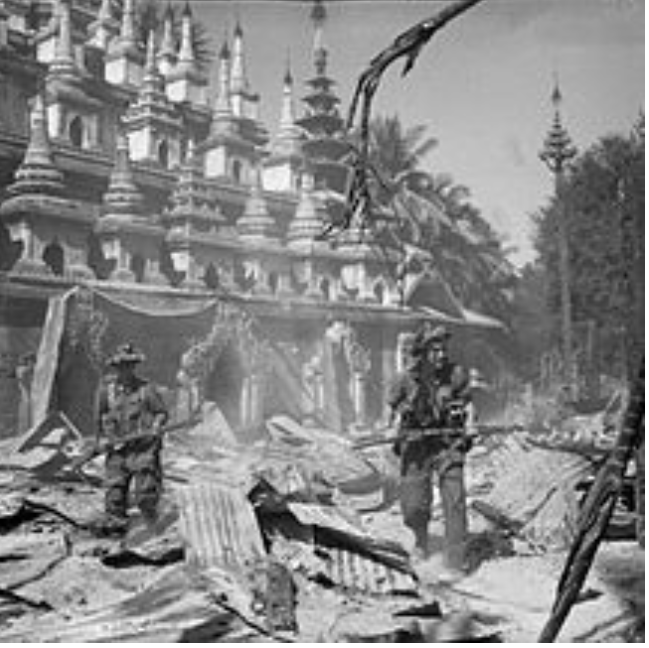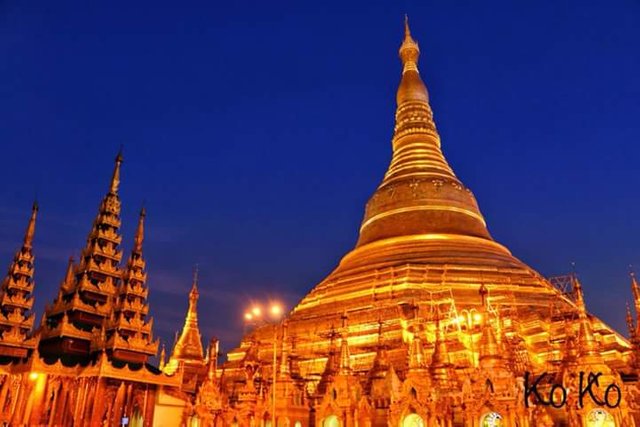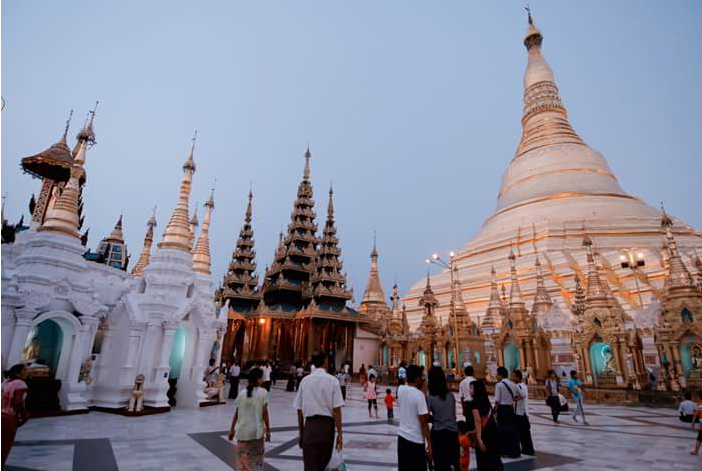Myanmar History
Myanmar has a long and complex history. Many peoples have lived in the region and the history began. The first identifiable civilization is that of the Mon. The Mon probably began migrating into the area in about 300 BC, and their first kingdom Suwarnabhumi, was founded around the port of Thaton in about 300 BC.

The Pyu arrived in Myanmar in the 7th century and established city kingdoms at Binnaka, Mongamo, Sri Ksetra, and Halingyi. During this period, Myanmar was part of an overland trade route from China to India. By 849, the Burmans had founded a powerful kingdom centered on the city of Bagan and filled the void left by the Pyu. The kingdom grew in relative isolation until the reign of Anawrahta (1044 - 77) who successfully unified all of Myanmar by defeating the Mon city of Thaton in 1057.
After the collapse of Bagan authority, Myanmar was divided once again. The Burmans had restablished themselves at the city of Ava by 1364, where Bagan culture was revived and a great age of Burmese literature ensued. The kingdom lacked easily defendable borders, however, and was overrun by the Shan in 1527. Surviors of the destruction of Inwa eventually established a new kingdom centered on Taungoo in 1531 led by Tabinshwehti (reigned 1531-50), who once again unified most of Myanmar. A popular Burmese leader named Alaungpaya drove the Bago forces out of northern Myanmar by 1753, and by 1759 he had once again conquered Pegu and southern Myanmar while also regaining control of Manipur. He established his capital at Rangoon, now known as Yangon. Myanmar was known to the West ever since western explorers had heard of it. Marko Polo was the earliest known westerner who discovered Myanmar and introduced to the West.
Shwedagon Pagoda in Yangon, Myanmar
The picture perfect and postcard worthy Shwedagon Pagoda is exactly that. It is featured as the main attraction in Yangon, and oftentimes, Myanmar itself. Shwedagon Pagoda is no doubt the most beautiful temple, but also the most beautiful religious building I have had the opportunity of experiencing.
Walking around the golden Stupa itself, to the extensive grounds and the locals who visit for meditation, you could honestly spend hours here. There are so many sites to take in and numerous buildings to explore.


The Shwedagon Pagoda history is associated to a legendary story about journey of two brothers. The tradition reflects the establishment of the Shwedagon, as contained in the Hmannan Mahayazawindawgyi (The Great Glass Palace Chronicle). It was compiled in the early 1830s by a Royal Commission composed of learned monks, brahmins and lay scholars. The tradition is as following:
According to Buddhist history, over 2500 years ago, Prince Siddartha attained Buddha hood after the realization of the “Four Noble Truth” which are:
Life means suffering.
The origin of suffering is attachment.
The cessation of suffering is attainable.
The path to the cessation of suffering.
Tapussa and Bhallika, two merchant brothers of Asitanjana in the Mon country went on a journey of trading by ship and 500 carts.
They arrived at where the Lord Buddha sat in the bliss of emancipation under the linlun tree. And it was the 49th day after his Enlightenment and then, the two brothers offered honey cakes to him.
After having eaten the offering, the Lord Buddha was asked for a gift by the two brothers. He passed his hand over his head and obtained 8 hairs to give to the brothers. The sacred hair were eight fingerbreadths long in the Majjhimadesa (Indian) measure.
After that, two brothers start the return trip by carts and ship, carrying the sacred hairs with them in a ruby casket. En route, they met the King of Ajjhatta and requested to give him two of the sacred hairs. Continuing the journey back by trip, they reached Cape Negraisat the southwestern extremity of Myanmar and met a Nage (Serpent) King named Jayasena obtained two more sacred hairs from them and carried them to the Naga country of Bhumintara.
After putting the ruby casket containing the 4 left sacred hairs in a pile of pearls shaped like a pagoda, the two brothers informed the King of Ukkalapa of the matter. The King then came with four arms of war – elephants, horses, chariots and foot soldiers and made a vow of paying reverence by making a clockwise circuit of the pagoda of pearls. Via that, the sacred hairs were restored to number of 8 as origin.
Then, with the King, the two brothers brought the sacred hairs back to to Asitanjana where Sakka, King of Devas and they decided to enshrine the eight sacred hairs on Singuttara Hill to the east of Asitanjana where also were enshrined the relics of the three Buddhas previous to Gotama – the water filter of Kakusandha, the robe of Konagamana and the staff of Kassapa.
The enshrinement took place on the Full-Moon Day of Tabaung, a Wednesday. The King of Devas, the King of Ukkalapa and the two brothers made a relic chamber 44 cubits square and 44 cubits deep. The relic chamber was then filled knee-deep with jewels of all kinds, on which was placed a a jewelled ship, on which was put the relics of the four Buddhas.
A stone slab covered with gold placed over the relic chamber and on it was erected a golden pagoda 44 cubits high. After encased in a silver pagoda, the Shwedagon Pagoda was then encased next in a pagoda of gold and copper alloy, then in bronze pagoda, then in iron pagoda, then in a marble pagoda, and finally in a brick pagoda.
Cheetech မထိေစနဲ႔ဗ်